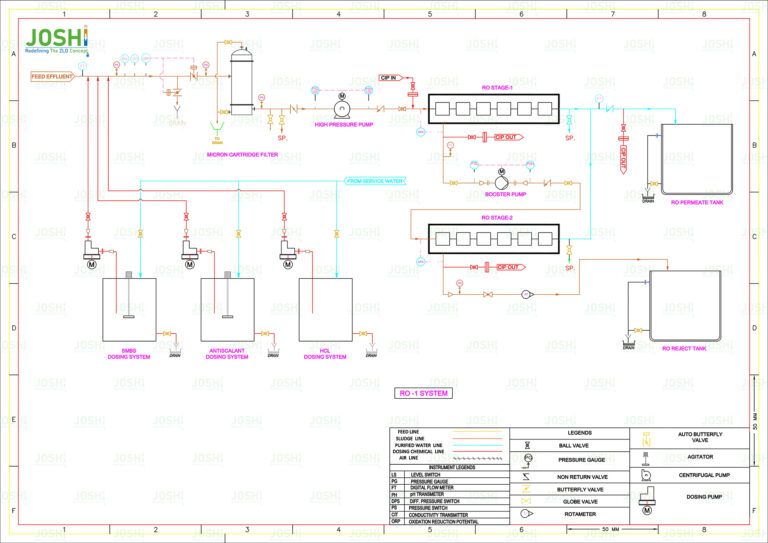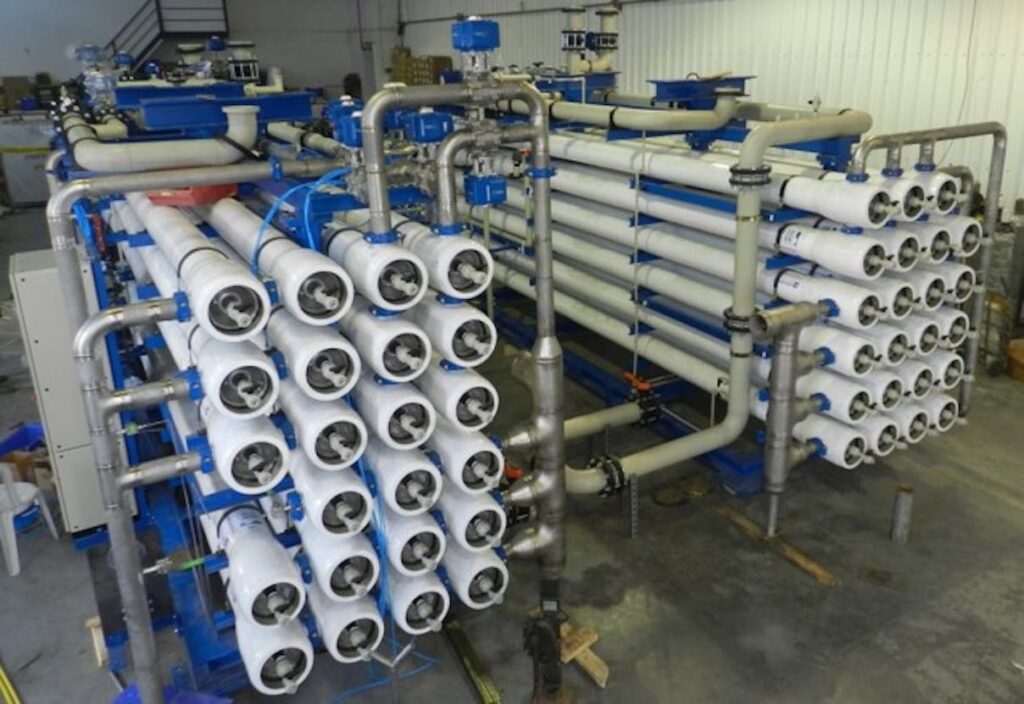RO Plant - Reverse Osmosis Plant
A reverse osmosis (RO) plant in wastewater treatment is a specialize facility that utilizes the process of reverse osmosis to treat wastewater and produce high-quality, purifie water. The plant incorporates various components and processes to remove dissolved solids, contaminants, and impurities from the wastewater.
System Components
Pre-Treatment: Prior to entering the reverse osmosis system, the wastewater undergoes pre-treatment processes to remove larger particles, suspend solids, and other impurities.
RO Membrane Module: It consists of semi-permeable membranes that selectively allow water molecules to pass through while rejecting dissolve solids, contaminants, and impurities. These membranes have very small pores that effectively separate the purify water from the concentrate contaminants.
Feed Pump: The feed pump is responsible for pressurizing the wastewater and supplying it to the RO system. It generates the necessary pressure to overcome the osmotic pressure and force the water through the RO membranes.
Filtrate Collection System: The purified water, known as permeate or filtrate, that passes through the RO membranes is collect through a permeate collection system.
Concentrate Disposal: The contaminants, salts, and concentrate impurities that are rejected by the RO membranes form a concentrate stream known as the concentrate or reject.
Control System: The reverse osmosis plant is equip with a control system that monitors and regulates various parameters, including feed water pressure, flow rates, and membrane performance.






